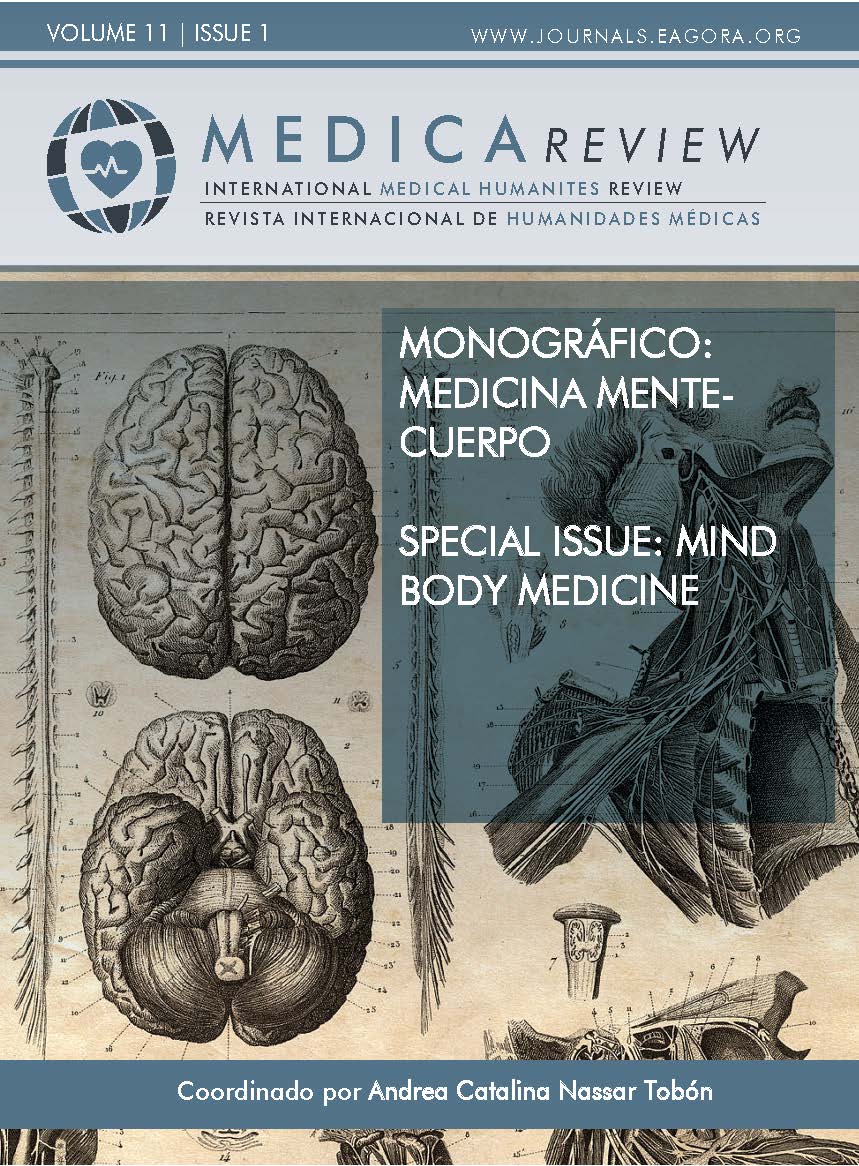Reversibilidad y estilo motriz en Merleau-Ponty
El cuerpo como obra de arte
DOI:
https://doi.org/10.37467/revmedica.v11.4546Palabras clave:
Merleau-Ponty, Reversibilidad, Estilo, Intersubjetividad, IntercoporalidadResumen
En este trabajo, se analizarán los fundamentos que posibilitan el descubrimiento, la interacción y el entrelazo con otras subjetividades. Considero que en el circuito de reversibilidad en el que los otros son una parte constitutiva de nosotros mismos, la percepción del estilo motriz se instala como la base del emparejamiento cinestésico e intercorporal, el cual posibilita la acción conjunta y, en definitiva, cualquier lazo comunitario. Desde la descripción que Merleau-Ponty realiza de esta dinámica de implicación de mi cuerpo con el entorno, el mundo circundante es una parte constitutiva de ese intercambio, determinando formas específicas de hacer y moverse conjuntamente.
Estadísticas globales ℹ️
|
163
Visualizaciones
|
63
Descargas
|
|
226
Total
|
|
Citas
Gallagher, S. (2017). Intercorporeidad y reversibilidad: Merleau-Ponty, emoción, percepción e interacción. En D. Pérez y D. Lawler (Eds.), La segunda persona y las emociones (pp. 23-44). SADAF.
Gallagher, S. y Zahavi, D. (2012). La mente fenomenológica. (M. Jorba Grau, Trad.). Alianza.
Gomila, A. (2002). La perspectiva de segunda persona de la atribución mental. Azafea, 1, 123-138.
Gomila, A. y Pérez, D. (2017). Lo que la segunda persona no es. En D. Pérez y D. Lawler (Eds.), La segunda persona y las emociones (pp. 275-297). SADAF.
Husserl, E. (1996). Meditaciones cartesianas. (De J. Gaos y M. García-Baro, Trads.). Fondo de cultura económica (original en alemán, 1931).
Merleau-Ponty, M. (1971). La prosa del mundo. (Francisco Pérez Gutiérrez, Trad.). Taurus (original en francés, 1969).
Merleau-Ponty, M. (1984). Fenomenología de la percepción. (J. Cabanes, Trad.). Planeta-Agostini (original en francés, 1945).
Merleau-Ponty, M. (1995). La Nature. Notes Cours du Collège de France. Éditions de Seuil.
Merleau-Ponty, M. (2001). Psychologie et pédagogie de l’enfant. Cours de Sorbonne (1949-1952). Verdier.
Merleau-Ponty, M. (2002). El mundo de la percepción. Siete conferencias (Víctor Goldstein, Trad.). Fondo de Cultura Económica (original en francés, 1948).
Merleau-Ponty, M. (2010). Lo visible y lo invisible. (E. Consigli y B. Capdevielle, Trads.). Nueva visión.
Merleau-Ponty, M. (2011). Le monde sensible et le monde de l’expression. Cours au Collège de France. Notes, 1953. MetisPresses.
Ospina Tascón, V. y Español, S. (2016). El movimiento y el sí mismo. En S. Español, Psicología de la música y el desarrollo. Una exploración interdisciplinaria sobre la musicalidad humana (pp. 111- 156). Paidós.
Pérez, D. (2013). Sentir, desear, creer. Una aproximación filosófica a los conceptos psicológicos. Prometeo.
Rivière, A. (1986) Interacción precoz. Una perspectiva vygotskiana a partir de los esquemas de Piaget. En M. Belinchón, A. Rosa, M. Sotillo e I. Marichalar (Eds.) Ángel Rivière. Obras escogidas, Vol II (pp. 109-142). Panamericana.
Saint Aubert, E. (2004). C’est le corps qui comprend ». Le sens de l’habitude chez Merleau-Ponty. Alter. Revue de phénomenologie, 12, 105-128.
Saint Aubert, E. (2011). Avant-propos. En Merleau-Ponty, M., Le monde sensible et le monde de l’expression. Cours au Collège de France. Notes, 1953. MetisPresses.
Schilder, P. (1994). Imagen y apariencia del cuerpo humano. Estudios sobre las energías constructivas de la psique. Paidós.
Descargas
Publicado
Cómo citar
Número
Sección
Licencia
Aquellos autores/as que publiquen en esta revista, aceptan los términos siguientes:
- Los autores/as conservarán los derechos morales sobre la obra y cederán a la revista los derechos comerciales.
- Transcurrido un año desde su publicación, la versión del editor pasará a estar en acceso abierto en la web de la editorial, pero la revista mantendrá el copyright de la obra.
- En el caso de que los autores deseen asignar una licencia abierta Creative Commons (CC), podrán solicitarla escribiendo a administracion@edulab.es









